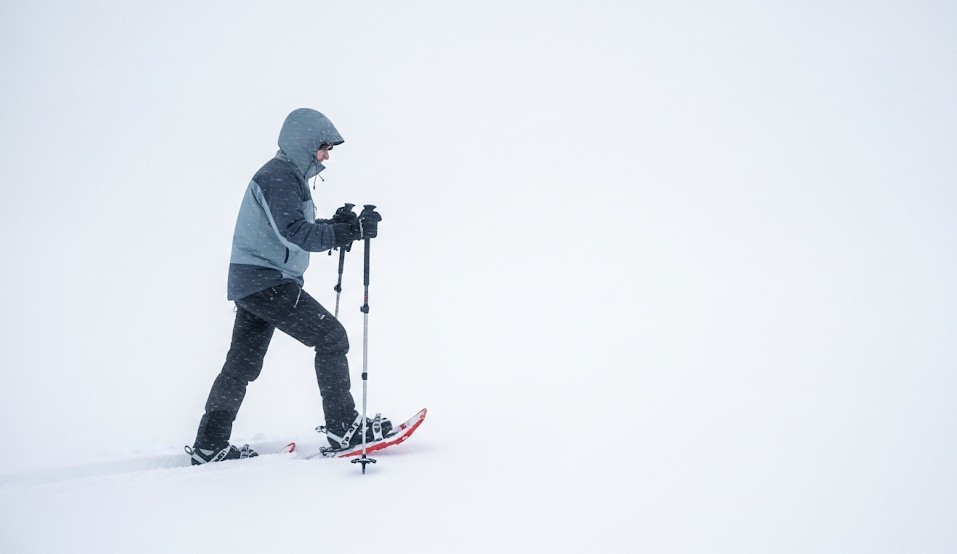Whiteout Navigation & Snow Travel Protocol

Objective
Move safely in whiteout using short legs, strong handrails, and disciplined spacing while preventing cold injuries.
Scenario (Example)
Example: Ridge traverse with 30–50 m visibility, wind 25–35 km/h, intermittent sleet. Team of four with map, compass, and GPS backup.
Movement Plan
- Short legs: 100–200 m between checks.
- Lead & Tail: Navigator leads; strongest member tails; everyone within voice range.
- Handrails: Use a corniced ridge, stream gully, or marked poles; avoid leeward cornice edges.
Bearings & Drift
- Set a bearing from the map; assign a “human range marker” 10–15 m ahead to hold line.
- Correct drift every 20–30 steps; sidewind pushes increase drift—counter with deliberate crab angle.
Halt Discipline
- 2–5 minute halts behind windbreaks; layer up before you chill.
- Buddy checks: face, hands, speech; warm fingers on belly/neck.
Emergency Box
- Pitch a low storm pyramid with skis/poles; dig a boot trench; heat drink; reassess go/no‑go.
Real Example
Group avoided a leeward cornice by holding a conservative line on the windward side and stopping every 150 m for map checks; they hit the saddle within 20 m.
Checklist
- Goggles, face protection
- Spare dry gloves
- Hot drink kit
- Reflective emergency shelter
Contingencies
- GPS fails → pace count + handrails; shorten legs more.
- Frostnip signs → stop movement; rewarm; swap layers.
After‑Action
Record drift angle vs. wind so future traverses are faster.
← Previous | All Articles | Next →
